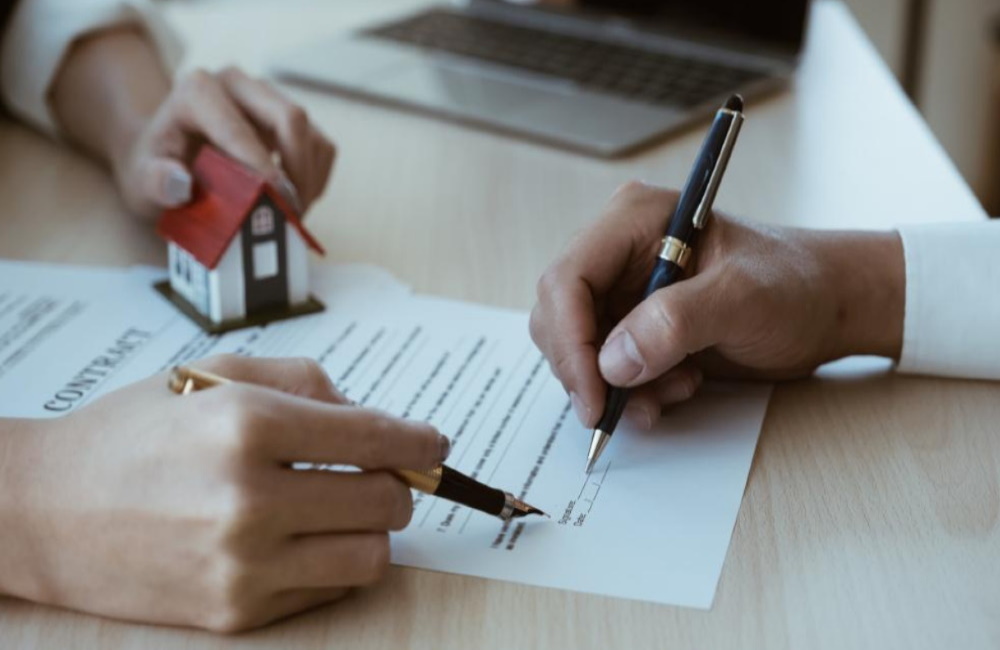A Guide to the Legal Process of Buying Property in Malaysia

Buying a new family home is exciting news! Perhaps your family is growing, and it’s time to upgrade to a bigger place, or maybe you want to move to a different township. Either way, once you find your dream home, you can’t wait to move in and start making beautiful memories.
The only problem is, there’s a pretty long and taxing legal process to go through before that new place is truly yours. The legal process of transferring a property from seller to buyer can be quite daunting, but don’t worry! We’ve got you covered.
We’ll walk you through the entire legal process, step-by-step, so you’re better prepared for what’s to come!
This process usually takes around 3 to 6 months to complete, depending on whether the property is freehold or leasehold, and whether any housing loans are involved.
Here are the common steps in transferring property ownership in Malaysia when housing loans are involved:
1. Sign the letter of offer
Once you decide to buy a property, the agent will ask you to sign a letter of offer, where you’ll have to pay an earnest deposit of around 2 to 3% of the purchase price.
With this, you’re expressing to the seller your serious intent to purchase the property, and the seller in turn agrees to sell the property to you at the agreed upon price.
2. Lodge a caveat
Once the letter of offer is signed, both the buyer and seller will engage lawyers.
The buyer’s lawyer will run a land search on the property to check for any encumbrances. An encumbrance is when someone other than the owner makes a claim on the property. Once the lawyer confirms that the property is free of encumbrances, he/she will then lodge a caveat against the property in question.
This essentially restricts the sale of the property to anyone else. The caveat will be visible to anyone who conducts a land search on the property.
3. Prepare and sign the Sales and Purchase Agreement (SPA)
The next step is for the buyer’s lawyer to prepare the SPA.
Then, the buyer and seller will both screen through the SPA. If both parties are agreeable to the terms, they will proceed to sign the finalized agreement.
After that, the lawyer will submit the SPA for stamping. The stamp duty is borne by the buyer.
This is also when you’ll need to pay your down payment, if applicable. Ask your lawyer for the necessary details in order to prepare a banker’s cheque for the right amount.
4. Apply for state consent
If the property you’re buying is a leasehold property, then this additional step is required. Upon signing the SPA, the seller’s lawyer will apply for state consent to sell the property. This process can take around 1 to 3 months.
5. Settle loan-related matters
The buyer will send all the required documents including payslips, banks statements, and the SPA to his/her bank to facilitate the housing loan application. Ask your bank for a list of required documents, so you can compile them accordingly.
Meanwhile, the seller’s lawyer will request a redemption statement from the seller’s bank. A redemption statement is a document detailing the amount that needs to be paid to the bank to fully repay a housing loan before the property can be sold to someone else.
This is only necessary if the property is still under loan. If it’s fully paid for already, then this step will be skipped.
6. State government grants consent
In the case of leasehold property, once the state government grants consent, the lawyers will proceed with the transfer process.
7. Buyer’s bank releases partial loan sum to redeem property
By this point, the buyer’s lawyer would have received the buyer’s home loan agreement from the bank.
Based on the redemption statement from the seller’s bank, the lawyer will advise the buyer’s bank to release a portion of the loan to pay off the redemption sum, i.e. the outstanding sum that the seller owes his/her bank.
8. Sign and stamp the Memorandum of Transfer (Form 14A)
The seller and buyer sign a Memorandum of Transfer, i.e. a document that transfers the ownership of a property from one person to another. This document is signed when the property in question has a title. For cases without a title, a Deed of Assignment is signed instead.
After signing, the buyer’s lawyer submits the document for stamping. The stamp duty is borne by the buyer.
9. Register transfer of ownership at land office
The buyer’s lawyer then registers the transfer of ownership at the land office. Once the title is successfully registered in the name of the buyer, the lawyer will advise the buyer’s bank to release the balance loan sum.
10. Delivery of vacant possession (handover)
Once the balance sum is released, the seller’s lawyer will settle the apportionment, i.e. splitting of property expenses such as quit rent and assessment tax between the seller and buyer, and arrange for the property keys to be delivered to the buyer’s lawyer. The keys will then be handed over to the buyer, now the new owner of the property.
11. Inform city council and utility companies
Once you receive the keys to your new place, you’ve got one more important thing to settle. You’ll need to inform your local city council and the utility companies (e.g. Air Selangor, TNB, Indah Water) about the change in ownership.
The seller would have terminated his/her utility accounts, so you’ll need to open new accounts under your name to reinstate water and power to your property.
And with that, you’re done! That dream home is now yours to move into.
This process may sound overwhelming, but your lawyer will guide you through it every step of the way.
If you’re currently looking for your dream home, search for suitable properties on our website. Choosing the right house can be tough, so we’ve streamlined the process to make things easier for you. Raise a request, choose an agent, view available properties that you like, and buy your dream home.
Buying a house should be a happy occasion for you and your family, not a stressful one. So skip the hassle and browse through our property listing today!





